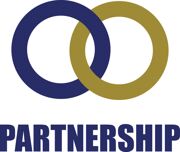- Home
- How can we support?
- Partnership
- facebook Share this page on Facebook
- twitter Tweet this page
- pinterest Pin this page
Partnership
 A trust partnership is a sector-led arrangement where a school and trust work together, testing whether a formal partnership will benefit both parties. There are a variety of reasons why a trust and school might choose to enter a trust partnership. Partnerships can allow strong schools and trusts to explore the benefits of collaborating (for instance, sharing expertise through headteacher and subject expert networks). They also allow a school to access a trust’s networks and services. Trust partnerships can also be used as a powerful school improvement tool, allowing vulnerable schools to access support from a strong trust.
A trust partnership is a sector-led arrangement where a school and trust work together, testing whether a formal partnership will benefit both parties. There are a variety of reasons why a trust and school might choose to enter a trust partnership. Partnerships can allow strong schools and trusts to explore the benefits of collaborating (for instance, sharing expertise through headteacher and subject expert networks). They also allow a school to access a trust’s networks and services. Trust partnerships can also be used as a powerful school improvement tool, allowing vulnerable schools to access support from a strong trust.
Trust partnership arrangements are often governed through formal documents. The ability of both parties to set terms and conditions that work for them is key to a successful partnership. The model SLA (Service Level Agreement), published alongside this guidance, is intended to be adapted to individual circumstances and used flexibly. Although written for a partnership with an LA (Local Authority) maintained school, it can be adapted for use also for an academy trust with only one school. Similarly, although written for partnerships providing school improvement support, it can be adapted for other uses.
Trust partnerships are not to be considered a replacement for converting to academy status or a routine preliminary step before academy conversion takes place. Although, they may help support schools awaiting conversion by allowing them to work collaboratively with the academy trust before the conversion process is completed.
Key components of trust partnerships
Whilst flexibility is vital to trust partnerships, the following components are key to any arrangement:
- It should be time-limited, typically 12-18 months. It is imperative that none of the parties involved considers a trust partnership as a long-term solution, or a replacement for conversion.
- During the partnership, the governing body of the school should give due consideration to academisation/merging through formal consultation where required.
- Activity undertaken as part of the partnership should focus on teaching and leadership. Trust partnerships are usually focused on activities such as academy trust-wide training opportunities, headteacher mentoring and support, and crosstrust benchmarking of data.
- All arrangements should be recorded through formal documentation. Whilst documents may vary, academy trusts have expressed the importance of each party being clear from the outset about the terms, any costs, expectations, and objectives of the arrangement.
Link to the Department for Education: Trust Partnerships - Guidance for academy trusts and prospective joiners
How can we support?
- What can the MILL Academy Trust offer?
- Outreach
- Partnership
- Academisation

